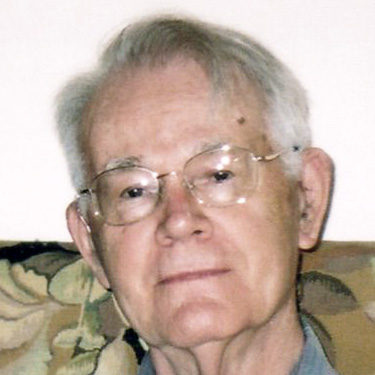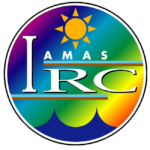
Robert (Bob) S. Fraser, physicist, radiative transfer specialist, aerosol remote sensing en-thusiast, and mentor, passed away peacefully in his sleep on May 4, 2014, only 3 days short of his 91st birthday. Bob was a Ph.D. student of Zdenek Sekera at UCLA, where he learned radiative transfer and multiple scattering, including polarization, along with fellow graduate students Kin Coulson, Diran Deirmenjian, and post-doc J. V. Dave. He worked in Atmospheric Physics at TRW (now Northrop-Grumman) from 1960-1970, at which point he joined NASA Goddard Space Flight Center where he conducted an active research career for some 25 years.
In the 1950s and 1960s aerosol particles were widely studied. It was postulated then that the climate cooling that had occurred recently was due to aerosol effects and that man-made aerosols may bring about a devastating ice age. The climate warming that followed in the 1970s and 1980s discouraged policy makers from funding aerosol research and most scientists from studying aerosol properties. Only a handful of American scientists continued to study tropospheric aerosol. Dr. Fraser was one of the prominent few.
Dr. Fraser has studied aerosol properties, the possibility of satellite remote sensing of aerosols, and the optical impact of aerosols on atmospheric radiation and on remote sensing of the earth’s surface through the intervening atmosphere (including atmospheric correction of the ocean for ‘ocean color’ inferences). His work is of the highest scientific standards. It has been conducted with great care for the validation of remote sensing algorithms, has established the margin of errors through sensitivity studies, and has utilized careful mathematical analysis for a better understanding of the processes involved. In a series of papers published in the international scientific literature, he established many “firsts” in the field. A few examples follow:
In a comprehensive paper, Dr. Fraser developed a method for remote sensing of tropo-spheric aerosol from the Geostationary Meteorological Satellite. The method was applied to show the transport of sulfate aerosol from the continental US to the Atlantic Ocean. It was then related to the global production and transport of sulfate particulate matter. In addition, a network of ground-based measurements was established for close validation of the satellite-derived parameters. This was accompanied by a detailed sensitivity study of the accuracy of the method and to identify the main sources of error. The method required accurate calibration of the satellite sensor, which was not available at the time. Furthermore, the satellite calibration changed substantially on a daily basis. Dr. Fraser discovered an ingenious solution to this problem. Using the same satellite radiances over dark and pristine ocean areas for specific conditions, he was able to calibrate the sensor using the well-known molecular scattering of atmospheric gases as a precise calibration source.
Dr. Fraser used his deep and basic understanding of aerosol optical properties to describe, in several publications, their radiative effects, and to correct overlooked fundamental notions in other scientists’ studies. An example of this is his study of the effects of aerosol absorption. At the time the effect of aerosol on screening the earth’s surface from satellite observations was characterized by a single parameter, aerosol optical depth. Dr. Fraser showed in an analytical paper that the aerosol absorption is an independent parameter that is just as important for the understanding of remote sensing. This led to the development of methods for remote sensing of aerosol absorption from satellite images.
Dr. Fraser employed his intelligence and knowledge to guide and advise young scientists in problems related to atmospheric optics. Although outwardly shy and unassuming, his depth of understanding and physical insight was incredibly valuable in refining and developing remote sensing concepts by others. His very timely inquiries often led to clarifications of assumptions or clearer presentations, and on numerous occasions improved work for which Bob was not a named co-author. He was highly sought for his sage and gentlemanly advice. His own work and that of his former post-doc Yoram Kaufman has had a major impact on the development of aerosol remote sensing capability from the Earth Observing System, especially as applied to MODIS.
Bob was also a great friend and personal advisor to a stream of young scientists, many from outside the US, who joined the rapidly growing Laboratory for Atmospheric Sciences at NASA Goddard in the late 1970s. His cheerful disposition and constant encouragement helped them navigate the inevitable problems that arise in dealings with government or-ganizations. Bob will be missed by all who had the good fortune to have enjoyed his sage advice and deep humanity.
Michael King, Teruyuki Nakajima, Harshvardhan, Lorraine Remer, Om Bahethi, Alexander Smirnov
